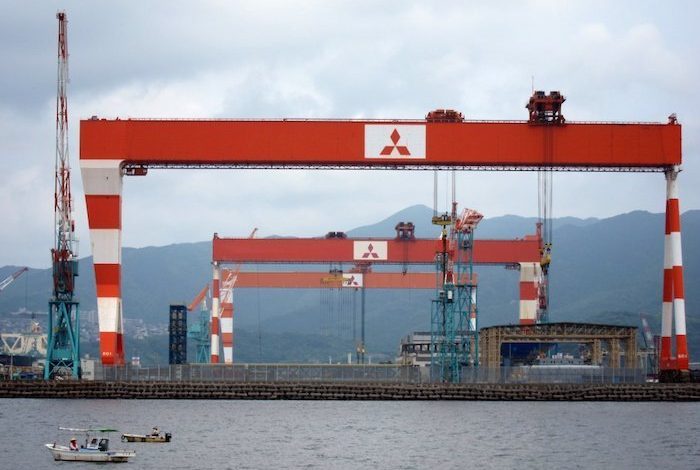
Once Japan’s largest private company and the biggest shipyard in the world now faces an uncertain future.
Mitsubishi Heavy Industries (MHI), which can trace its history back to the 1850s, is going through yet more restructuring and senior management has hinted that its commercial shipbuilding division, the very origins of the conglomerate, could be spun off.
President Shunichi Miyanaga said at a press conference that the spinoff could happen as early as July. A potential spin off would see the design units as well the Nagasaki and Shimonoseki shipyards bundled together. Miyanaga also outlined a big restructuring of the group into four new divisions, his second sizeable rejig of the conglomerate since taking the top post in 2013.
The group is suffering large losses from a failed foray into cruise shipbuilding as well as struggling to develop a passenger jet design. For the nine months to December MHI registered a net loss of Y11.24bn ($100m).
MHI this week replaced the chief of its Nagasaki shipyard and machinery works. The shipyard boss also stepped down as president of MHI’s shipbuilding unit, to be replaced by Koji Okura, head of the parent’s shipbuilding and ocean development division.
In related news MHI will split off its marine diesel engine business and transfer the operations to its long-term licensee Kobe Diesel while it has also established a specialised oil and gas division to be headquartered in Houston.
MHI, like many Japanese shipyards, is struggling with a dwindling orderbook. On top of that, its decision to revisit cruise shipbuilding has been a massive loss-making failure.
MHI is one of the Japan’s most prestigious conglomerates. In 1857, at the request of the Tokugawa Shogunate, a group of Dutch engineers began work on the Nagasaki Yotetsusho, a modern, Western-style foundry and shipyard near the Dutch settlement of Dejima, at Nagasaki. This was renamed Nagasaki Seitetsusho in 1860, and construction was completed in 1861. Following the Meiji Restoration of 1868, the shipyard was placed under control of the new government. The first drydock was completed in 1879.
In 1884, Yataro Iwasaki, the founder of Mitsubishi, leased the Nagasaki Seitetsusho from the Japanese government, renaming it the Nagasaki Shipyard & Machinery Works and entering the shipbuilding business on a large scale. Iwasaki purchased the shipyards outright in 1887. In 1891, Mitsubishi Heavy Industries – Yokohama Machinery Works was started as Yokohama Dock Company.
The Mitsubishi Heavy Industries – Shimonoseki Shipyard & Machinery Works was established in 1914. By the 1930s MHI was the largest private firm in Japan.

This is sobering news; for very many people, a “three diamond ship” has always been a bit special, and I must say I have never known a bad one. The Kobe yard stopped shipbuilding five years ago.
Sic transit gloria mundi
Largest shipyard in the world. !!!!. ?.